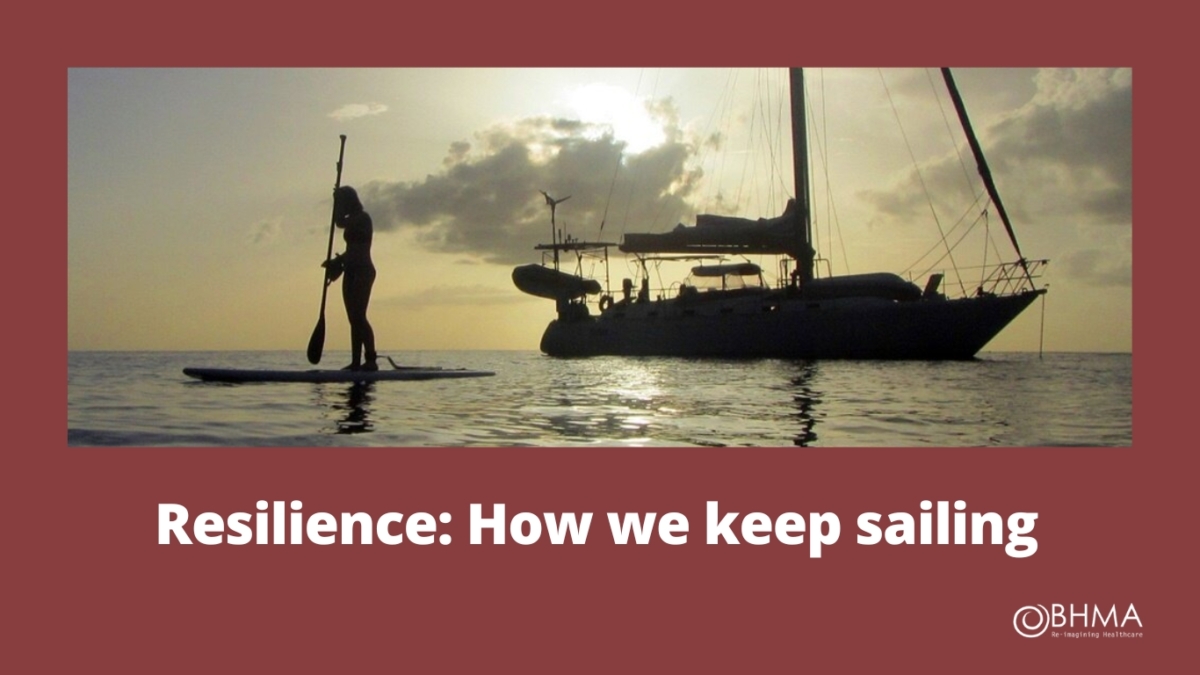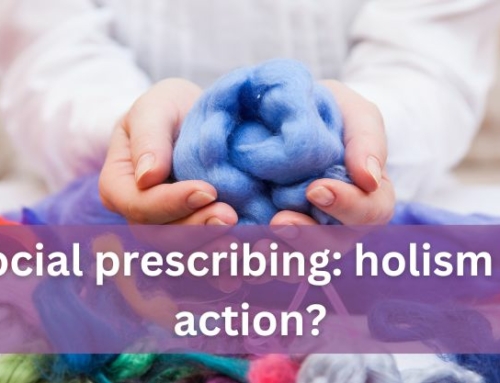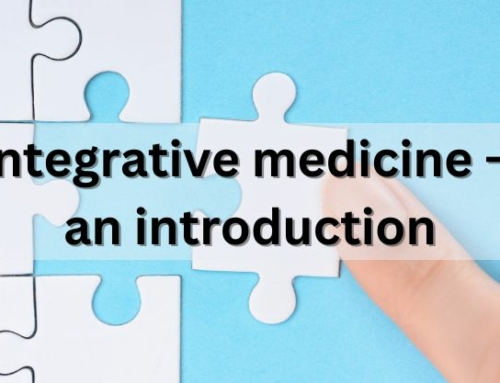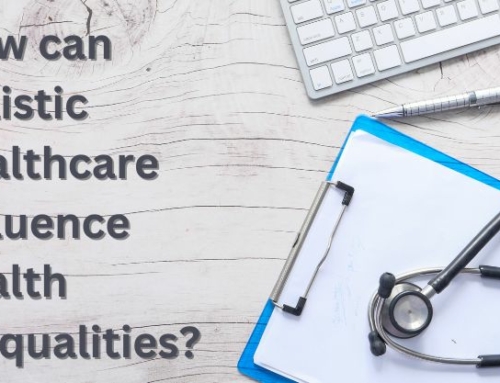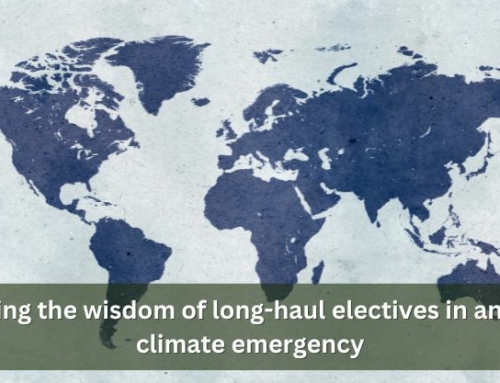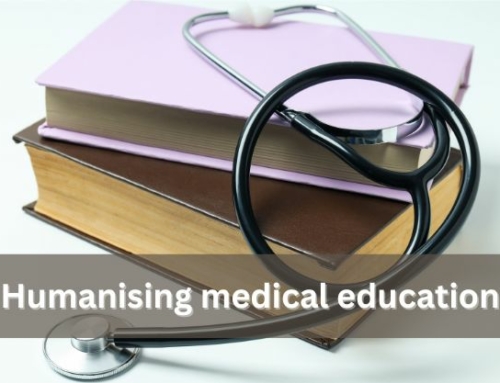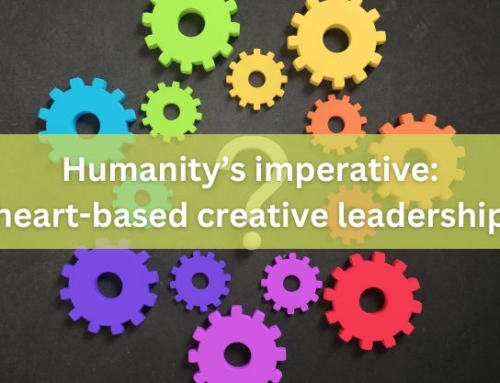Resilience: How we keep sailing
Jennifer Napier, GP; NIHR In Practice Fellow at Queen Mary’s, University of London
Published in JHH12.1 – Future horizons
I’m a practicing GP, with a passion for – and curiosity about – wellbeing that extends beyond the biomedical model. I’ve practiced yoga for well over half of my life, and also trained in a western approach to acupuncture. I am researching senior GPs’ career narratives, and how these have been shaped by NHS changes. I am also developing a PhD proposal to extend this work and explore how professional practice has been changed in general practice.This all links with my ongoing interest in the wellbeing of healthcare practitioners, and how the system supports or constrains them.
‘We cannot direct the wind but we can adjust the sails’ Click To Tweet What is resilience? Why has it become a new buzzword? In order to enrich our understanding of resilience, I will sketch out some ideas that draw on research exploring doctor wellbeing, as well as narrative medicine. As businesses and enterprises strive to survive in an evermore turbulent economic climate, interest in resilience has grown at both individual and organisational levels.
The literature defines resilience is various ways, but for the purposes of this paper I will define it as ‘the capacity to recover from difficulties and go on living a meaningful and productive life’. Some authors have simplified this and called it ‘the ability to bounce back’ (Johnstone 2009). This image of bouncing back illustrates some of the haziness around the idea of resilience. It is a term originally applied in engineering, specifically in shipbuilding, to indicate a quality of materials that did not break under strain. And so as levels of stress and burnout soar to unprecedented levels the ability not to break under the strain presents human resilience as metaphor that requires our attention, but also raises important questions: is there some standard metric for resilience; from what amplitude and frequency of challenge should we be ‘bouncing back’; at what rate ought we to be recovering if we are to be considered resilient? And does bouncing back imply returning to the same place as we began before the challenge, or rather would bouncing forward be something better?
These questions illustrate the implausibity of measuring resilience. But they also reveal the fundamental difference between the resilient qualities of materials and human beings. For human resilience is dynamic and context-dependent, and surely, experience leaves us in no doubt that life does indeed change people. As Rita Charon wrote movingly in a piece about practising narrative medicine ‘compassion, respectfulness, loyalty, humility, courage, and trust[1]worthiness become etched into the physician’s skeleton by the authentic care of the sick (Charon 2001).
Other words of interest as we reflect on how to survive and even thrive in life have been ‘vitality’, ‘well[1]being’, and ‘flourishing’. My own notion of resilience is actually very close to the idea of flourishing, which draws on virtue ethics in considering how to live meaningfully engaged lives (Toon 2014).
In my view it is to be celebrated that we do not have one clearcut standard definition or way of measuring what we are referring to as resilience. The very flexibility of the term offers a concept elastic enough to apply to our own journeys in meeting the contours of life.
Drawing on the nautical theme, I want to present resilience as a dynamic interrelationship between a captain and crew, our navigational tools, and the purpose of a journey that inspires us to keep sailing. We rely on the captain for leadership; on our fellow crew members to be collaborative, companionable and trustworthy; our navigational tools to guide us accurately; and the purpose of our journey to be worth the risk and effort. And then the ship itself needs to be sturdy enough for the hazardous ocean, and filled with the sustenance to see us through the voyage. It is the interconnected, dynamic interplay of these elements that combines to create resilience.
The more connected we are in our social networks, both within and outside of work, the more resilient we become
The captain and the crew
Good leadership in our work organisations keeps the destination – or purpose of our endeavour – present in the ‘sayings’, ‘doings’ and ‘relatings’ (Kemmis 2008) of the work. All of us are called to be leaders, keeping present to both the meaning of the work, and alive to our connections with colleagues. As we collaborate and we get on with the work we become role models, supports and guides to one another. We cannot simply act and speak as though we were alone or right – for if we cannot engage others, we risk cutting off from them. There may be individuals who have particular skills that make them resilient in certain ways in certain conditions, but the resilience of an individual depends fundamentally on their situation, and profoundly on developing relationships with other people.
Working in healthcare, there is often little time to attend to one’s own basic needs in a working day, and scarcely time to connect adequately with patients or colleagues. We develop professional defences to protect ourselves against exposure to suffering in a culture of stoicism, self-sufficiency, and perfectionism. This personal armouring – denial, for instance, and an unwillingness to face our own vulnerability – may ultimately interfere with our own wellbeing.
In many ways, the heavy workload in itself is not so much the issue as the consequences of heavy workloads in that they fragment teams and prevent members from being ‘present’ to one another
The more connected we are in our social networks, both within and outside of work, the more resilient we become, and this is intertwined with having an approach–engage mentality. Rather than avoiding connections with others, we do well to create cultures in which we can draw fortitude from sharing doubts, uncertainties, reflections and jokes. Conversations with others can help reframe a troubling issue, renew our stamina and feed us with sustaining images and ideas. Relating to others can comfort and reassure us that we are not alone; or sometimes just gives us the chance to laugh.
Nowadays it can be toxic to work in many healthcare organisations; we have no time or space to get to know one another, to develop trust, camaraderie and human connection. A good captain knows that his crew works best when they are connected by human bonds, and that for this to happen there needs to be some slack in the system; a bit of ‘down-time’ together. In many ways, the heavy workload in itself is not so much the issue as the consequences of heavy workloads in that they fragment teams and prevent members from being ‘present’ to one another.
Researchers followed third year medical students for a year, gathering data on the challenges they had experienced – for example the suffering or death of a patient, being belittled, or seeing unprofessional practice. Their findings revealed that the way in which challenges are experienced has an impact on resilience and wellbeing. Challenges viewed as linked to the true purpose of medical education were ‘traumas’ which could be processed and assimilated, leading to growth. However ‘stressors’ that cut at the very roots of meaning and connection, such as being belittled or seeing unprofessional practice, led to anxiety and depression. The medical students who had experienced and bounced forward from ‘traumas’ were found to be more resilient at the end of the year, while those who had experienced ‘stressors’ were more anxious and depressed (Haglund et al 2009).
Bullying is such a pernicious issue in present day healthcare because it undermines the ethos of healthcare, destroying relationships, stamina and morale. It has disastrous effects on patients and staff, as the Francis Inquiry reminded us. Some suggest the hierarchical and highly politicised structures of the NHS is a root cause, while others (including Francis) have emphasised the substantial tension between meeting financial imperatives and the task of providing quality care. Returning to our seafaring metaphor, the incongruity of these organisational structures and goals reminds us that captain and crew must have the same destination in mind, and that the same purpose has to animate their journey.
Places and spaces
A good captain will see when his crew is tired and needs a rest; will know when they need encouragement, inspiration and sustenance. Our leaders are ideally placed to invest in creating safe spaces through support and supervision, and physical places where we can come together and digest our experiences, and remind one another of the purpose of our endeavour. Fortunately there are moves to create more such intimate spaces such as Schwartz rounds in hospitals, and peer support groups in general practice that provide reflective and collaborative forums in which to connect more deeply with colleagues, and help renew one another’s professional values.
The crew of the good ship healthcare needs to draw on a wide array of approaches if they are to meet the challenges of healthcare work creatively. In particular, they need the attitudes and emotional skills that help build good relationships with patients and with one another. Each day will be different, and our abilities to recognise limitations, strengths and needs are vital aspects of resilience. As Haimon says to his father Creon, in Sophocles’ play, Antigone: ‘In a storm, trees that don’t bend and sailors who don’t slacken their sails end up getting destroyed. On the other hand, trees that bend and sailors who slacken their sails remain intact.
Navigation
When sailing we need to be finely attuned to weather changes, and adjust our approach and expectations accordingly. Being in tune with our moment-to-moment reality in work – and life more broadly – is a profound skill that mindfulness practice can bolster. Although denial can be useful as a coping strategy in an emergency, it will shape a brittle kind of coping if relied on in the long term. Being attentive to each moment allows us to notice emotions in ourselves. This embodied connection with the present is the foundation of learning from experiences, and it underpins good relating and wise responding.
Being grounded in the present moment supports an ethic of engagement with life
Being grounded in the present moment supports an ethic of engagement with life, and active participation in situations we encounter so that we are more likely to shape things according to our values. The crew of a ship may know best when to reduce speed in stormier conditions, and the captain will know that he risks losing his crew if he expects them to keep sailing day and night with no rest. We learn how to sail well by sailing, adjusting our efforts on the basis of how things unfold. This calls for reflective practice, an approach whereby we learn that we are able to adapt, withstand, and to make meaning by learning from challenges. And, by so deepening our ability to engage with the present and with one another, we learn that healthcare requires us to embrace ambiguity, complexity and not-knowing (Plsek and Greenhalgh 2001), for the voyage is full of uncertainties.
Alastair Dobbin wrote lucidly about resilience in a previous article in this journal (Dobbin 2013). He explained that positive emotion is linked to positive social engagement, flexibility, and problem-solving. One part of developing resilience is to lean towards happy experiences, images and thoughts, yet not at the expense of denying real and sometimes difficult challenges. A quota of positivity should make up part of the sustenance we need for our journeys.
The destination
Engaged awareness, and wellsprings of good cheer can help us stay on course, but we also need the right map and compass to guide us to where we want to be heading. This is where values and narrative come in. Seeing narrative and values as resources connects us back with good leadership. One of the functions of leadership is to use images, stories and words to help people make better sense of their situation and to see alternative options, and to communicate and reflect the core values of the organisation they lead.
The more connected we are to our sense of purpose and meaning, the more passion we have to draw on
Because our vocational work brings us face to face with the ‘troubles’ of human life, it’s crucial to feel our work is deeply connected to our value system. The more connected we are to our sense of purpose and meaning, the more passion we have to draw on to help us approach difficulties as challenges that may be overcome, rather than as inconvenient injustices. It is no mistake that we refer to our ‘moral compass.
Kleinman is critical of the notion of happiness as a ‘right’ and disparages our culture’s unspoken imperative to be happy all the time. Instead he implores us to be realistic and accept the inevitable difficulties which our lives engender, and to make a moral commitment to work with them as a way of cultivating meaning.
A recent paper from Australia explored the resilience of GPs working in areas of social disadvantage; the kind of medical work that is seen as more intensely stressful and overwhelming (Stevenson et al 2011). But in this study the GPs were satisfied by what they felt was meaningful work, with which they engaged intellectually. These doctors appreciated and respected their patients, and rather than feeling thwarted by difficulties in promoting healthier lives, they celebrated small gains. The authors write that the GPs had calibrated their expectations realistically. This paper elegantly describes how meaning frames our approach to work; indeed it can be the force that animates all we do.
The authors conclude that these doctors were driven by ‘pro-sociality’ rather than altruism. Altruism is a disinterested concern for another, suggesting something of a divide between the beneficiary and benefactor. Pro[1]sociality on the other hand is about tangible behaviours of giving, helping and creating harmonious relationships, embodying an ‘engage-approach’ attitude. This captures the centrality of connectedness to the concept of resilience. The doctors in this study demonstrated strong connections to both a sense of meaning, and a desire to relate with their patients.
In the sailing analogy, if our value system is our compass, then our stories become our maps. As Chris Johnstone wrote in 2009, ‘one of our most important choices is which story we inhabit’. Alastair Dobbin wrote that being able to imagine oneself recovering from a setback was one of the main influences on recovery (Dobbin 2013). So it seems our sense of ourselves and the value system we carry around are intricately linked with our personal narrative. Though they are not something we often consciously consider, the remarkable fact is that narratives allow us at once to maintain a continuous sense of ourselves, while also allowing for change, which may be why reading the map of our lives in different ways can lead us towards different destinations. Narratives offer us the ultimate flexibility tool, because with a bit of work, we can actively shape our own narratives, to move from chaotic, or compulsively rigid stories, towards ones that give us forward impetus in life, for example a ‘quest’ or ‘restitution’ narrative, (Frank 1995). Burnout could represent a form of ‘narrative wreckage’, such that the original story/map that drew us into the work has run us aground on the rocks, because it no longer makes sense of the territory we find ourselves in. Narrative re-imagination and renewal is possible, and could take the form of reflective writing, personal therapy or simply rest and a reconnection with the roots of one’s story. Work with narrative shows that the more connected we are to a whole range of cultural and social symbols, images, role models, ideals and options, the more flexibility we will have for developing mental schema that could help us approach life more realistically, and engage more fully with it.
Our Ship
So is our ship seaworthy, and are we well supplied for our journey? The ship is the structure we work in, our organisation.
A seaworthy vessel would be designed to keep safe its most valuable asset, the crew. As they pursue their intended journey together, conditions on board have to allow the crew to flourish. So a resilient organisation will make systematic, proactive efforts to improve processes and resources, both at the level of the task – by giving autonomy and seeking feedback – and through relationship-building. A resilient organisation benefits from its crew’s expert collective knowledge and skills, but only as long as communication is open and flowing. This leads to further engagement and commitment from the crew who feel they are valued and respected for their skills, and collaboratively able to shape the endeavour.
The journey is never entirely predictable so accepting and adapting to complexity and uncertainty are significant aspects of resilience. There needs to be some ‘give’ in the system, a margin for coping with the unexpected. It is folly to sail too close to the wind. On an organisational level the question is always how to create enough structure while allowing for flexibility. By providing what staff need in the way of support, time and places to rest, eat, connect and process experiences of every kind the organisation lays in a store of energy and commitment it may need to draw on when the going gets tough.
Resilience is made up of qualities within and around an individual or an organisation which enable them to adapt flexibly to the changing demands they face. It is a complex, dynamic process fundamentally rooted in inter[1]connectedness with others, an evolving sense of meaning and purpose, and a growing ability to respond well to each unfolding moment.
References
- Charon R (2001) Narrative medicine: A model for empathy, reflection, profession and trust. Journal of the American Medical Association 286(15) pp 1897–1901.
- Dobbin A (2013) Optimism, resilience and compassion in the health service: What works and what doesn’t, and can we afford it? Journal of Holistic Healthcare 10(3) pp 16–21.
- Frank A (1995) The wounded storyteller: Body, illness and ethics. Chicago: University of Chicago Press
- Haglund MEM, Rot M, Cooper NS, Nestadt P, Muller D, Southwick SM & Charney DS (2009) Resilience in the third year of medical school: a prospective study of the associations between stressful events occurring during clinical rotations and student well-being. Academic Medicine 84(2) pp 258–268.
- Johnstone C (2009) Resilience, recovery and the self-help SSRI. Journal of Holistic Healthcare 6(3) pp 23–26.
- Kemmis S (2008) Praxis and practice architectures in mathematics education. In Goos M, Brown R & Makar K (eds.) Proceedings of the 31st Annual Conference of the Mathematics Education Research Group of Australasia. Wahroonga, NSW: MERGA.
- Kleinman A (2014) How we endure. The Lancet 383(9912) pp 119–120
- Plsek P & Greenhalgh T (2001) Complexity science: the challenge of complexity in healthcare. British Medical Journal 323(7313) pp 625–8
- Stevenson AD, Phillips CB, Anderson KJ (2011) Resilience among doctors who work in challenging areas: a qualitative study. British Journal of General Practice DOI 10.3399/bjgp11X583182.
- Toon P (2014) A flourishing practice? London: Royal College of General Practitioners

